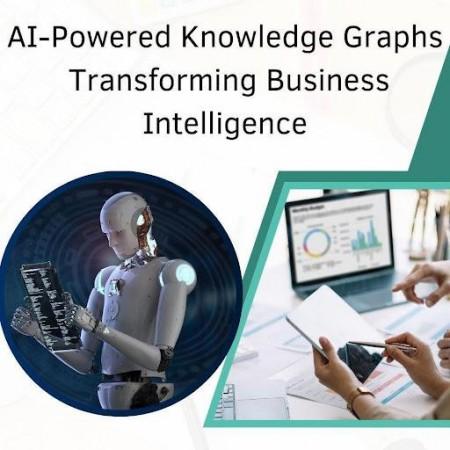
In today's fast-paced technological landscape, the integration of Artificial Intelligence (AI) with Knowledge Graphs is revolutionizing Business Intelligence (BI). These AI-powered Knowledge Graphs are enhancing data discovery and redefining how enterprises interpret complex data relationships. Indraneel Madabhushini, a seasoned researcher in this domain, delves into the transformative impact of this technology on modern business analytics.
The Power of AI-Driven Knowledge Graphs
AI-powered Knowledge Graphs utilize semantic modeling and machine learning to process and interpret vast amounts of structured and unstructured data. Unlike traditional databases, these graphs establish intelligent relationships between data points, offering a 75% improvement in data integration speed and a 42% boost in decision-making accuracy. This innovation allows enterprises to uncover hidden insights and optimize operational efficiency.
Enhanced Query Performance and Data Integration
AI-integrated Knowledge Graphs offer unparalleled query performance, with response times under 100ms, drastically reducing latency compared to traditional relational databases. These systems streamline data retrieval by leveraging AI-driven entity recognition and relationship inference, enhancing efficiency by up to 5x. This automation eliminates manual data mapping, enabling enterprises to extract insights faster and more accurately. Organizations managing vast datasets across departments benefit from seamless integration, real-time analytics, and improved decision-making. The ability to dynamically adapt to evolving data structures ensures scalability, making AI-powered Knowledge Graphs an indispensable asset for enterprises seeking high-performance, intelligent data management solutions.
Deep Learning for Intelligent Data Analysis
Deep learning has revolutionized Knowledge Graphs by significantly enhancing entity recognition, achieving a remarkable 94% accuracy rate. Neural networks refine information retrieval, minimizing errors and improving contextual understanding. Reinforcement learning dynamically optimizes queries, ensuring higher relevance and efficiency in data processing. These AI-driven Knowledge Graphs empower businesses to analyze billions of data points with real-time precision, enabling seamless decision-making. By leveraging advanced machine learning techniques, organizations can extract deeper insights, enhance search capabilities, and automate complex workflows, driving innovation and competitive advantage in data-driven industries.
Revolutionizing Predictive Analytics
AI-driven Knowledge Graphs revolutionize predictive analytics, enabling precise, data-driven decisions. With a 91% success rate in demand forecasting, businesses can anticipate market trends and consumer behavior. This approach boosts forecasting accuracy by 43% and reduces stock inefficiencies by 32%, optimizing inventory and minimizing waste. By leveraging these insights, companies enhance agility, making smarter real-time decisions and improving resource allocation for a stronger competitive edge.
Semantic AI for Explainability and Insight Generation
AI-powered Knowledge Graphs enhance interpretability by incorporating Explainable AI (XAI), enabling transparency in decision-making. These systems structure complex data into interconnected relationships, offering natural language explanations that improve user comprehension by 76%. By clarifying AI-driven insights, they mitigate trust issues and enhance adoption across industries like finance and healthcare, where transparency is crucial. Financial analysts can trace investment risks, while doctors can understand AI-driven diagnoses, ensuring accountability. This synergy between Knowledge Graphs and XAI fosters informed decision-making, bridging the gap between AI complexity and human understanding.
Scalability and Future Prospects
AI-driven Knowledge Graphs excel in scalability by leveraging machine learning-driven sharding and parallel processing to manage vast datasets with billions of nodes and edges efficiently. These optimizations minimize bottlenecks, ensuring seamless expansion across enterprise infrastructures. Advanced indexing and distributed computing enhance performance, enabling real-time querying and knowledge retrieval. Organizations adopting these frameworks report a 71% boost in system performance while cutting operational costs by 45%, demonstrating their efficiency in handling complex, large-scale data ecosystems.
In conclusion, Indraneel Madabhushini highlights how AI-powered Knowledge Graphs revolutionize Business Intelligence by enhancing data discovery, optimizing query efficiency, and enabling advanced predictive analytics. As AI integration continues to evolve, businesses that embrace these cutting-edge technologies will gain a strategic advantage in data-driven decision-making, paving the way for more thoughtful and more efficient enterprise operations.

















